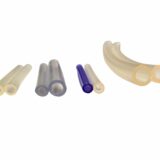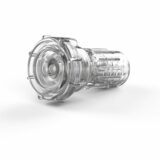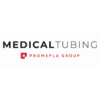Injection Moulding Process in Medical Device Manufacturing
Injection moulding is a cornerstone of modern manufacturing, particularly in the medical device industry. This versatile process enables the production of complex, high-precision components that are essential for a variety of medical applications.
What is injection moulding?
Injection moulding is a manufacturing process used to produce parts by injecting molten material into a mould. While this method is commonly used for creating plastic components, it can also be applied to metals, glass, and other materials. The process is highly efficient and capable of producing intricate shapes with tight tolerances.
The injection moulding process
The injection moulding process involves several key steps:
- Material selection: the process begins with selecting the appropriate material, typically thermoplastics such as polypropylene (PP), polyethylene (PE), polycarbonate (PC), and thermoplastic elastomers (TPE). These materials are chosen for their biocompatibility, strength, and flexibility. In some cases, the material must first be prepared by steaming prior to injection.
- Melting: the selected material is fed into a hopper, where it is heated to a molten state. This is achieved using a combination of external heaters and the friction generated by a rotating screw within the injection moulding machine.
- Injection: once the material is molten, it is injected into a mould cavity at high pressure. The mould is designed to shape the material into the desired form. For medical devices, moulds are crafted with high precision to meet stringent specifications. The moulds can be multi-cavity to allow a large number of parts to be injected each time.
- Cooling: after the material is injected into the mould, it is rapidly cooled to solidify it. Cooling is typically done using water or air. The cooling process must be carefully controlled to prevent defects such as warping or shrinkage.
- Ejection: once the material has solidified, the mould opens, and the finished part is ejected. The part may undergo additional finishing processes, such as trimming or sterilisation, to meet specific medical standards.
Applications and products in medical device manufacturing
Injection moulding is used to produce a wide range of medical components. Some common applications include:
- Angiography: components such as stopcocks, manifolds, and tubing connectors used in vascular imaging procedures.
- Oncology: devices for drug delivery systems, including spikes, chambers, and injection sites.
- Cardiac surgery: precision-moulded parts like clamps, valves, and fittings that support cardiovascular interventions.
- Ophthalmology: small, intricate parts used in eye surgery and diagnostics.
- Dental: custom-moulded components for dental tools and suction systems.
- Respiratory: connectors for ventilators and oxygen delivery systems.
- Enteral feeding: safe and sterile connectors, caps, and plugs for nutritional delivery.
- Urinary and urethral: components and fittings designed for urological applications.
- Intravascular and neuraxial devices: high-precision parts for fluid management and regional anaesthesia.
- Veterinary: adapted versions of human medical components for animal care.
Advantages of injection moulding in medical device manufacturing
Injection moulding offers several advantages that make it well-suited for medical device manufacturing:
- Precision and consistency: the process allows for the production of components with tight tolerances and consistent quality. This is crucial in the medical field, where even minor deviations can impact the performance and safety of a device. Cavity numbering helps pinpoint possible defects.
- Efficiency: injection moulding is a highly efficient manufacturing method, capable of producing large quantities of parts in a short amount of time. This efficiency is essential for meeting the high demand for medical devices.
- Customisation: the process can be easily customised to produce components with specific shapes, sizes, and properties. This flexibility is essential for meeting the diverse needs of medical applications.
- Material versatility: a wide range of materials can be used in injection moulding, allowing manufacturers to select the best material for each application. This versatility ensures that the final product meets the required biocompatibility and performance standards.
Challenges and considerations
While injection moulding offers many benefits, there are also challenges and considerations to bear in mind:
- Material selection: choosing the right material is critical for ensuring the biocompatibility and performance of the final product. Manufacturers must carefully evaluate the properties of different materials to select the best option for each application.
- Mould design: the design of the mould is crucial for achieving the desired shape and dimensions of the final product. Moulds must be crafted with high precision to meet stringent specifications. Each mould is designed specifically for the material of the part to be injected.
- Quality control: ensuring the quality of the final product is essential for meeting medical standards. Manufacturers must implement rigorous quality control measures to detect and address any defects.
Injection moulding is a crucial technique for producing medical devices, offering a reliable way to create precise, high-performance and customised components. As the healthcare sector continues to evolve and demand for sophisticated medical technologies increases, this manufacturing technique is set to become even more integral. Gaining a deeper understanding of injection moulding processes enables manufacturers to drive innovation and deliver solutions that enhance patient outcomes and clinical efficiency. You can call on Promepla for the development and production of your medical-use injection-moulded parts. Our production site in Germany, A. Hopf, has specialised in high-precision injection moulding for over 75 years. With a large fleet of injection moulding machines, we can handle both small and large parts.









